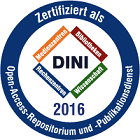Long-read 16S amplicon analyses and improved cultivation techniques as joined approach for the identification of viable bacterial populations in silage

Long-read 16S amplicon analyses and improved cultivation techniques as joined approach for the identification of viable bacterial populations in silage

| dc.contributor.author | Flegler, Wanda Antonia | |
| dc.contributor.author | Behrens, Freya | |
| dc.contributor.author | Sturmhöfel, Anne Theresa | |
| dc.contributor.author | Sonntag, Miriam | |
| dc.contributor.author | Schmitt, Lisa | |
| dc.contributor.author | Rang, Kristin | |
| dc.contributor.author | Deeken, Hauke Ferdinand | |
| dc.contributor.author | Sun, Yurui | |
| dc.contributor.author | Maack, Gerd-Christian | |
| dc.contributor.author | Büscher, Wolfgang | |
| dc.contributor.author | Baer, Mareike | |
| dc.contributor.author | Lipski, André | |
| dc.date.accessioned | 2025-11-13T10:51:44Z | |
| dc.date.available | 2025-11-13T10:51:44Z | |
| dc.date.issued | 14.06.2025 | |
| dc.identifier.uri | https://hdl.handle.net/20.500.11811/13676 | |
| dc.description.abstract | Aims: Lactic acid bacteria (LAB) are crucial for the quality and preservation of silage. Exploration and isolation of the key microbiome are important for improving fermentation processes. While cultivation-dependent methods enable the isolation of LAB, they often overlook organisms with challenging cultivation requirements. Next-generation sequencing provides cultivation-independent microbiome insights. In contrast to commonly used methods, long-read sequencing platforms like the Pacific Biosciences (PacBio) single-molecule real-time (SMRT) platform offer species-level resolution. This study aims to investigate the benefits of a combined cultivation-dependent and -independent approach for silage microbiome analyses. Methods and results: The common isolation medium for LAB was supplemented with sterile pressed juice from plant material improving the cultivation conditions. PacBio amplicon sequencing provided an almost complete and cultivation-independent picture of the bacterial community. The use of mock communities and a live/dead discriminating treatment of the samples revealed that the analysis can be misleading if appropriate controls are not performed. Conclusion: Growth of plant-associated microorganisms can be supported by a plant juice containing isolation medium, allowing isolation of the dominant LAB from silage. Microbial dynamics can be represented using long-read sequencing. However, the use of controls such as a live/dead discrimination and mock communities is essential for the reliability of the data. | en |
| dc.format.extent | 11 | |
| dc.language.iso | eng | |
| dc.rights | Namensnennung 4.0 International | |
| dc.rights.uri | http://creativecommons.org/licenses/by/4.0/ | |
| dc.subject | microbiome | |
| dc.subject | amplicon sequencing | |
| dc.subject | isolation | |
| dc.subject | lactic acid bacteria | |
| dc.subject | agriculture microbiology | |
| dc.subject.ddc | 570 Biowissenschaften, Biologie | |
| dc.subject.ddc | 610 Medizin, Gesundheit | |
| dc.title | Long-read 16S amplicon analyses and improved cultivation techniques as joined approach for the identification of viable bacterial populations in silage | |
| dc.type | Wissenschaftlicher Artikel | |
| dc.publisher.name | Oxford University Press | |
| dc.publisher.location | Oxford | |
| dc.rights.accessRights | openAccess | |
| dcterms.bibliographicCitation.volume | 2025, vol. 136 | |
| dcterms.bibliographicCitation.issue | iss. 7, lxaf151 | |
| dcterms.bibliographicCitation.pagestart | 1 | |
| dcterms.bibliographicCitation.pageend | 11 | |
| dc.relation.doi | https://doi.org/10.1093/jambio/lxaf151 | |
| dcterms.bibliographicCitation.journaltitle | Journal of applied microbiology | |
| ulbbn.pubtype | Zweitveröffentlichung | |
| dc.version | publishedVersion | |
| ulbbn.sponsorship.oaUnifund | OA-Förderung Universität Bonn |
Files in this item
This item appears in the following Collection(s)
-
Publikationen (3)




